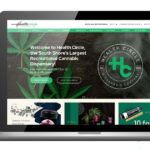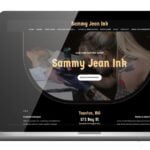When companies look to gain prospective clients, there are two main initiatives they can fund: inbound marketing and outbound marketing. The latter, outbound marketing, is considered the “traditional form of marketing.” The tried and true. Door to door salespeople, cold calling, and cold email outreach are all examples of outbound marketing.
Cold email outreach, the latest form of outbound marketing, consists of building a potential client list and then using a template email to draw upon the vast market. It’s the wide net used to catch B2B clientele. When you cast out a bunch of emails, you expect a small percentage will respond. From these responses, your sales team is the muscle that reels them in to become clients.
Why Cold Email Works
According to a study done by HubSpot, 33% of cold emails garner a neutral or somewhat positive reaction with consumers. This percentage is incredibly high considering telemarketers (another form of cold outbound marketing) has a 94% extremely negative to a somewhat negative reaction.
The reason why outbound email works is the end user has control. The subject line and initial information demarcate relevant and irrelevant information.
This is exactly what you want to happen. Businesses trying to gain B2B clients understand that most companies aren’t going to need their service. The goal is to reach the ones who do.
The Four Tenets of Cold Emailing
Cold emailing has gotten a bad rap of being called spam. It’s not. The fact is, businesses are at all different stages in their life cycle. Some are struggling with social media outreach. Some are expanding; some are downsizing.
When a company creates a beneficial product or service to offer but needs more B2B clients, the solution is to get its name in front of those other businesses. Focusing solely on inbound marketing limits the potential to do this. Now, the last thing you want your email to be called is “spam.” So, to do this effectively, you need the four key tenets of cold emailing:
- Building a List of Potential Clients
- Creation of a Template
- A/B Testing
- Securing the Client
Building a List of Potential Clients
Chances are a few names come to mind when talking about potential clients. For cold email outreach to be effective, a few names must grow to a list of names… a long list. Consider this, the best outbound emails generate leads somewhere between 5-10% of the time.
The idea is to know the “type” of your ideal client. What is the perfect business for your service? What problems do these companies face that your service will solve? The immediacy of these answers will help narrow down the attributes of potential clients.
Creation of a Template
The dreaded template. The weighted gold at the heart of a successful outreach program. (Or unsuccessful, hence the word “dreaded.”)
The template is the generic form of the email that every business will receive. This is before any customization or personalization happens. The template should be quick, informative, and to the point. Only then is it time to spruce things up.
Fundamentals of a Working Template
In order to perfect the email template, let’s look at its constituent parts:
- Subject Line – This is the first impression. The subject line is the one line of text that gets them to click open the email. For cold emailing purposes, the objective is sole: Get them to open this.
- The Opening Line – Sometimes called the hook. Really, it’s just the one sentence that sets the tone for the rest of the email. This is where you should show some form of personalization. Know who you’re contacting and what they do. The message the opening line should deliver is this: “You don’t know me, but I know you.”
- Body of the Message – Brevity, my Dear Watson. Brevity is the name of the game. The key is not to sell. Again, this is not about selling; that’s why you have a sales team. It’s about creating intrigue. The message to get across follows the opening line: “This is why you should get to know me.”
- Closing – Give them something worth responding to. A quick question. A suggestion for them to look deeper into your services. Make sure to leave your name, contact information, and position within the company below the email so any intrigue can be followed by relevant Google searches.
A/B Testing
The importance of A/B testing cannot be undervalued when it comes to cold email outreach. You might say a 5% response rate is low. Well, 1% is lower. Tweaking one small part of your template can be the difference between the two.
How to Successfully A/B Test
To properly A/B test, the idea is to keep all variables the same except for one. After figuring out the right combination of As and Bs, the Perfect Template can be created.
- Subject Line – Try going from vague to specific. “Quick Question” versus “2 Tips when Automating your A/B Testing”—notice the difference? With the subject line, you’re looking to improve the Email Opening Rate.
- The Opening Line – Notice on most email inboxes, the first few words of the email can be seen next to the subject line. Use this to your advantage.
- Familiar but Not Too Familiar – This is a hard line to gauge. Some templates are going to require more personal details. Some people find that quips or jokes increase relatability. Research your audience and make a judgment call. Then test differently.
- Call to Action – The closing line should insight intrigue and demand further investigation. There are a couple of ways to perfect your email CTA, but you can start with trying an appropriate and simple question or a link to a related article.
- Emoji or Not To Emoji – Some brands boasted an incredible jump in email open rate (56% higher) using emojis in their subject lines. This is one example of A/B testing.
Remember: The person on the other end of the email is like you. They’re working, they have a life, and they occasionally click on emails from an unknown sender. Try to convince yourself through the email!
Getting the Client
Generating interest around a product is great, but it’s the conversion from “leads” to “clients” that produces revenue. Businesses have clicked on your link, checked out your website, or responded to the email because there is some genuine interest. They have decided to give you some of their time. But not much.
In terms of the sales funnel—AIDA (Awareness, Interest, Desire, Action)—the initial cold email has provided awareness. The response is the interest. The desire and action to work with you is what converts clients.
How to do this is the next half of cold email outreach…
Alignment of Marketing and Sales
Leads from cold email outreach are not the same as customers who actively sought out your business. They’re less forgiving. That’s why it’s paramount to have a singular, customer-centric message and call to action between the two teams.
Marketing, in general, is driven by long-term goals. They want to grow a genuine base through information sharing and social networking. Whereas sales live in the moment. They are in charge of providing revenue and revenue happens now. These two goals can conflict.
Why Marketing Needs Sales
In fact, misalignment is much more common than one would hope. In Kapost’s 2018 Sales and Marketing Alignment Benchmark, it found that 55% of marketers don’t know what marketing assets the sales team uses most.
Sales can help the marketing team better understand what it is that turns leads to clients. This should be utilized to improve messaging.
Messaging
Responsibilities are blurring between sales and marketing. With all the consumer information available to businesses, sales and marketing should be working together to generate a singular vision around getting the customer through the sales funnel.
Why Sales Needs Marketing
Marketing is this large net that reaches out to a vast network of possible customers. Marketing teams can target different age groups, different genders, and different interest niches. Which means they can really narrow down their customer profile.
Yet, 44% of salespeople don’t know which marketing assets are used most by their fellow salespeople. If the customer profile is a mystery, so will be the forces that cause them to buy.
Call to Action
Within these two departments, the full picture of a customer can be created. Marketing creates the customer profile while sales use this information to narrow in on the appropriate CTA. This should be a constant exchange of information and adjustment.
Conclusion
Cold email outreach is not a faucet that starts generating clients instantly. It is a methodical process that needs tweaking to get all the gears aligned. Once the framework is there, it can be a massive win for B2B businesses.
However, these clients are different than the ones who actively came to your business. They need to be handled with precision. By having your sales and marketing teams aligned on a core message, leads will naturally become clients. Only then will it start flowing like a faucet.
Sources:
Forbes. Emojis: 7 Ways They Will Grow Your Business. Retrieved from: https://www.forbes.com/sites/julesschroeder/2017/05/19/emojis-7-ways-they-will-grow-your-business/%20-%20cece3792c41b
Kapost. Benchmark Report. Want more proven marketing strategies? Get the full benchmark. https://kapost.com/resources-library/
Blog. Hubspot. Native Advertising Rises As Consumers Opt Out. Mima An. Feb, 2016. Retrieved from: https://blog.hubspot.com/news-trends/native-advertising-rises-as-consumers-opt-out?_ga=2.212848276.1600705424.1555342549-731268707.1553530313
The post What is Cold Email Outreach? appeared first on Power Digital.
Article From: "Carly Biggs" Read full article
 SERPCOM is a full-service Boston digital marketing agency focused on improving online visibility, increasing traffic, raising revenue and providing SEO services.
SERPCOM is a full-service Boston digital marketing agency focused on improving online visibility, increasing traffic, raising revenue and providing SEO services.
SEO-first: A fundamentally better approach to online marketing.
Digital Marketing | SEO | Web Design & Development | Search Engine Marketing

SERPCOM is a full-service Boston digital marketing agency focused on improving online visibility, increasing traffic, raising revenue and providing SEO services. SEO-first: A fundamentally better approach to online marketing.
Digital Marketing | SEO | Web Design & Development | Search Engine Marketing
SERPCOM is a full-service Boston marketing agency focused on improving online visibility, increasing traffic, raising revenue and providing SEO services for leading brands.
Maximize the value of your website and turbo charge your online marketing efforts with SERPCOM. Call or click the button and start making the web work for you.
Just click on the Phone Number to dial on your phone:




